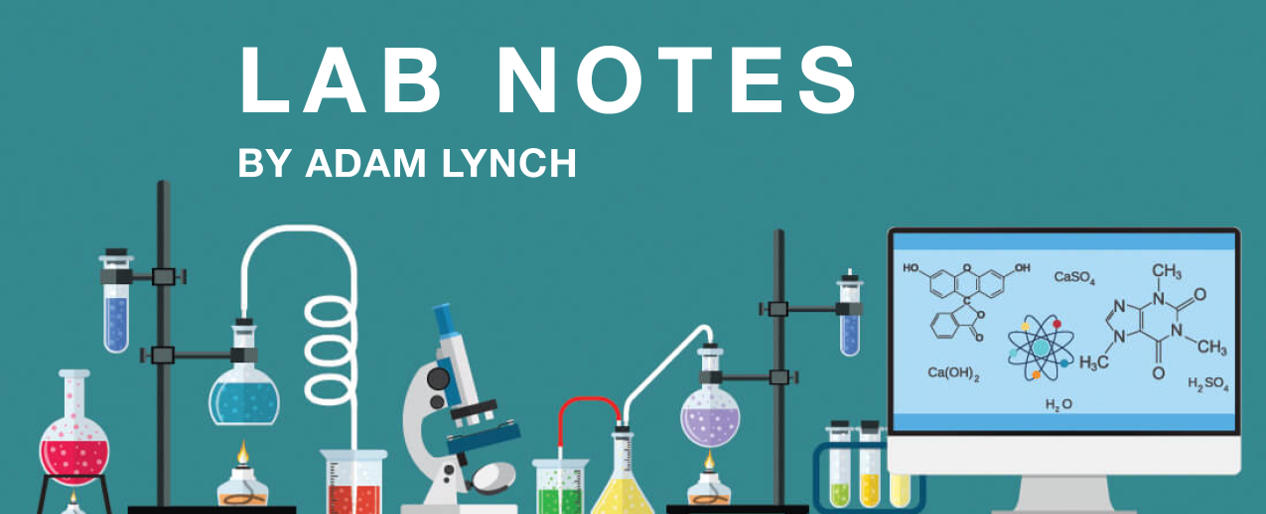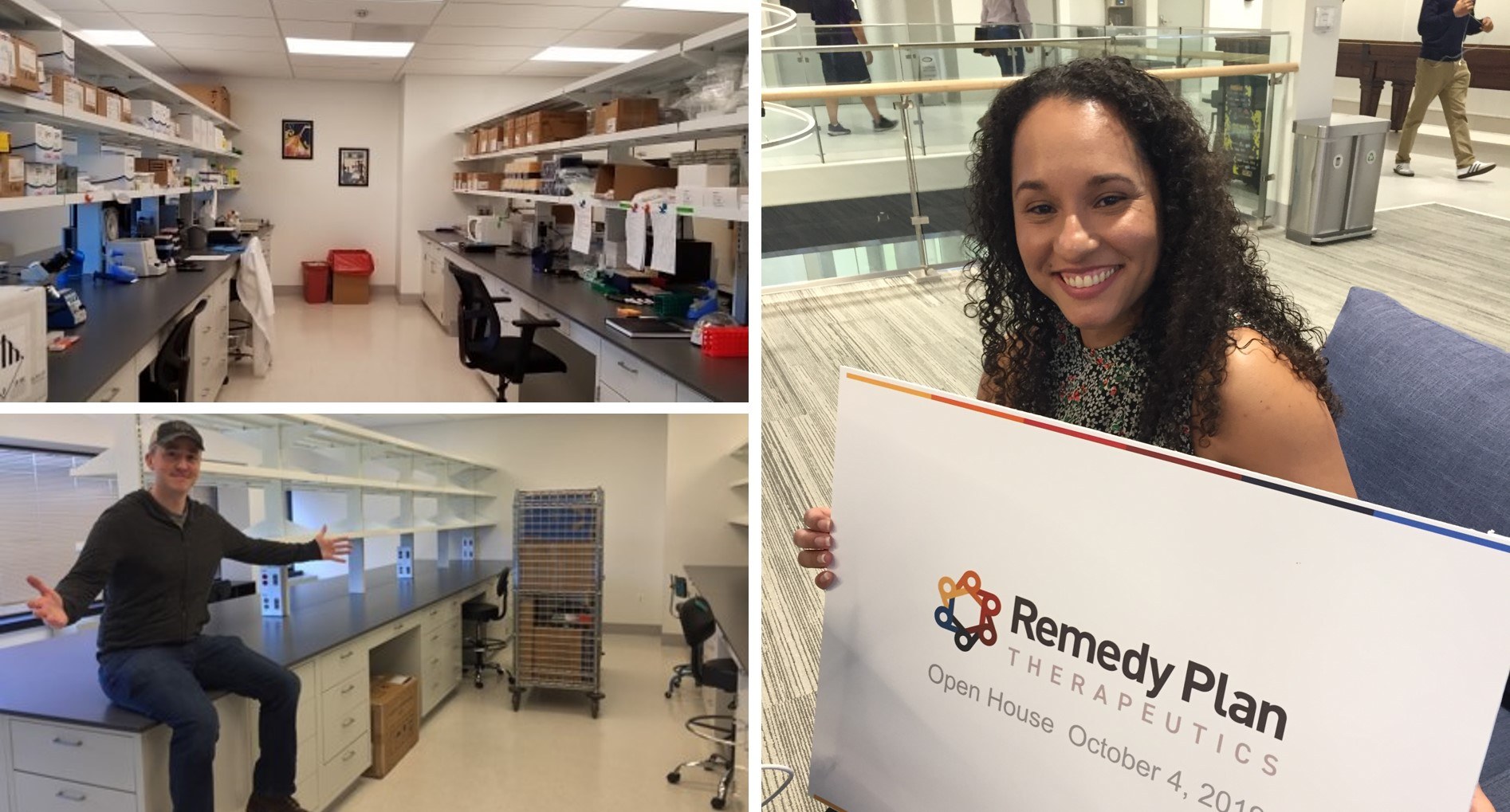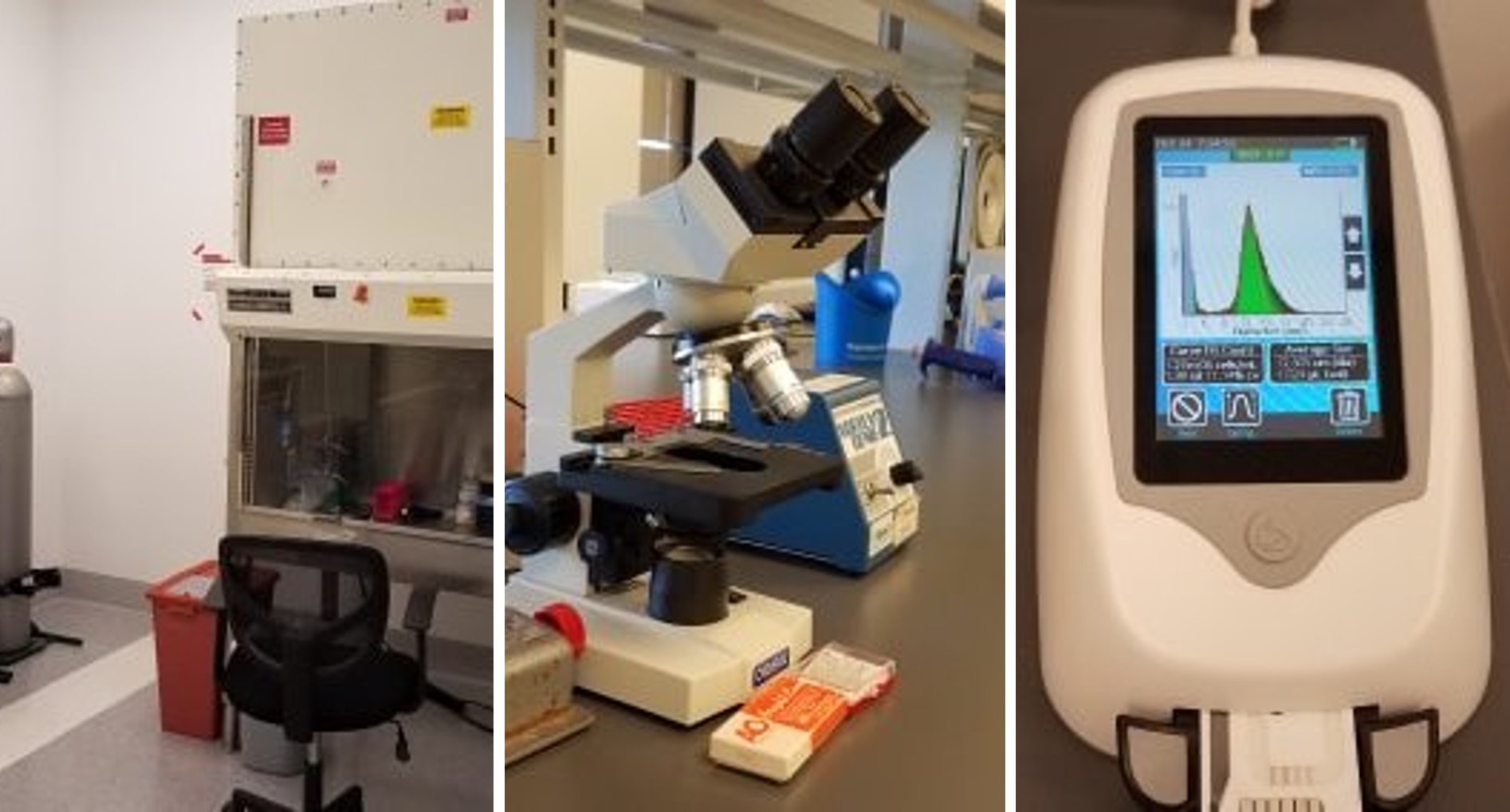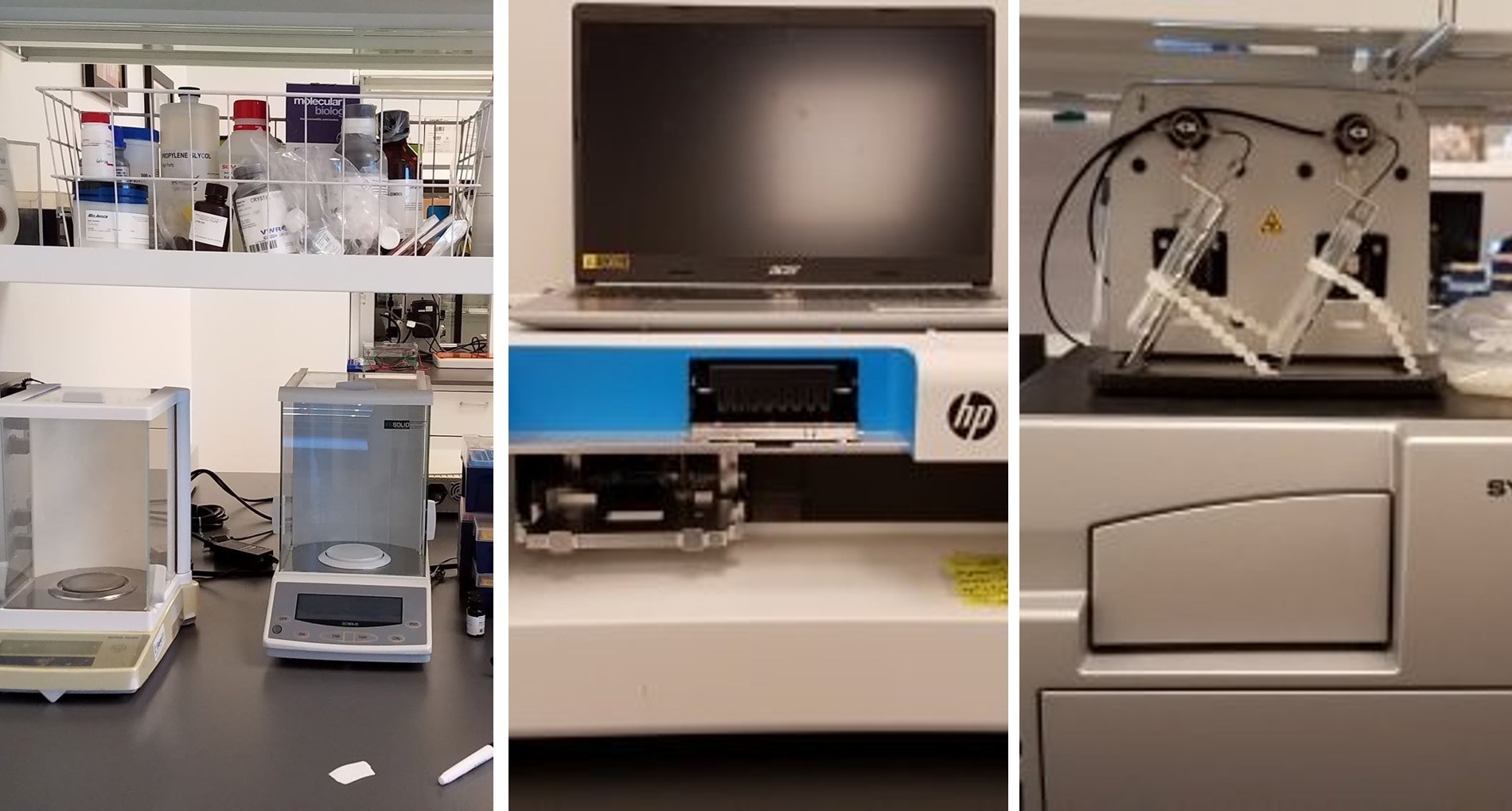Lab Notes: New Heights
Allison Crimmins on November 6, 2019

Lab Notes is a series created by Remedy Plan researcher Adam Lynch. WIth his posts, he aims to share his perspective on what it is like to work in a start-up atmosphere and to provide a glimpse of the laboratory science that drives research and discovery.
Reposted with permission from https://labnotes.science.blog/
New Heights
ON NOVEMBER 6, 2019 BY ADAM LYNCH IN STARTUP LIFE
Startup life is unique; it is a fast-paced work environment that requires team members to wear ‘multiple hats’ in order to hit major scientific milestones. It’s been a busy summer at Remedy Plan Therapeutics; with our expanding scientific operations we have been generating a lot of exciting data to advance our research and discovery efforts. In the process, we moved out of the old ‘garage lab’ and into a more spacious facility geared towards the growing biotech scene!

Greg Crimmins, CEO & Founder of Remedy Plan Therapeutics (top left)
The new lab fully stocked and ready for experiments, Gaithersburg MD (bottom left)
Dennise A. De Jesús-Díaz, Vice President- Scientific Operations of Remedy Plan Therapeutics (right)
Our new building fosters a collaborative environment where scientists from different biotech companies can network and share scientific equipment. In order to properly celebrate the new lab, we recently hosted an open house. Open houses are great, they provide researchers the opportunity to interact with all the people who have made our scientific progress possible. There was an incredibly diverse group of people present: friends, family members, scientific partners, and investors.
So, what is it like to give a lab tour to such a diverse group of people? Communicating science is nothing new for researchers, a big part of our job involves sharing ideas and results among colleagues. However, interacting with investors and other business entrepreneurs is a pretty unique experience. Stepping into a lab can be a bit overwhelming– there are rows of bench-tops filled with equipment and consumable materials. Generally speaking, people are not just interested in learning about what these scientific devices do, but also where they fit into the overall scientific operations. This piece is about sharing a scientific story through a virtual lab tour.
Station 1: Growing, counting, and plating cells

|Tissue culture room| |Hemocytometer| |Automated cell counter|
The tissue culture room is the dedicated space for cell based experiments. Here, Remedy Plan researchers grow and maintain cancer cells in a sterile environment for experimental testing. Performing these experiments allows us to characterize our compounds (potency, mechanism of action, cell death) for clinical decisions. If we want to perform a cell based experiment we must first prepare a solution of cells before transferring them to an assay plate which house each sample. There are a couple of different ways to do this. The first is to use a hemocytometer, a device invented in the 19th century to perform blood counts. It consists of a glass microscope slide with a grid of perpendicular lines etched in the middle. The grid has specified dimensions so that the area covered by the lines is known, which makes it possible to count the number of cells in a specific volume of solution. The second method is a lot easier; it involves using an automated cell counter. This device is able to accurately count cells in a given population based upon size. The average diameter of a Eukaryotic cell is about 10 micrometers, things that are either much smaller or larger than this are excluded.
Station 2: Testing potential drug candidates

|Chemistry Station | | HP D300 | | Luminometer |
The next series of scientific stations demonstrate how Remedy Plan researchers transition from experimental design to actually obtaining experimental results. The chemistry station is where compounds transition from design to testing. Here we measure the powdered stock of the compounds in order to dissolve and prepare stock solutions for in-vitro (test tube) testing. In order to physically test our compounds, we use a machine (HP D300) that uses the same technology as a printer. Instead of dispensing ink blots in precise locations we dispense cancer drugs (thanks for the inspiration Harvard ICCB Lab). Depending on the biological or chemical property that we interested in measuring, we might use a luminometer to quantify values such as luminescence (light). Reagents are added to drug treated cancer cells that convert a chemical reaction into light which we can analyze.
Station 3: Measuring Genetic Markers:

| Quantitative PCR | | Thermocycler | | Nanodrop |
The genetics area pictured above is my favorite part of the lab. We use the equipment above to determine how effective our therapeutic compounds are at altering specific genetic markers. In order to this DNA/RNA must first be extracted from cancer cells. We use the nanodrop spectrophotometer to quantify this with just 1 microliter of sample! To actually measure genetic changes, we use a technique called polymerase chain reaction or PCR for short. The goal of PCR is to experimentally perform the processes that allow cells to be copied or replicated prior to cell division in controlled laboratory conditions. Samples containing the DNA mixture of interest are put into the thermocycler machine, which regulates the different temperatures needed at each step of the process. This technique enables scientists to produce millions of copies of a specific DNA sequence from a small sample – sometimes even a single copy. By amplifying DNA over and over again via qPCR machine we can measure gene expression levels in response to drug treatment over time.
Giving a lab tour, especially to non-scientists, is fun and exciting. Business entrepreneurs and investors tend to ask really great big picture questions. Other non-scientists love hearing about cells, how we grow them, and how the lab equipment can measure such tiny things with accuracy. Showing a lab is like sharing a scientific story– a story where big ideas like developing cancer containment therapy inspires curiosity, which drives really big questions, which in turn drives important experiments that are performed in the lab by very motivated researchers. For me personally, events like this leave me with a sense of gratitude. It’s really great to share all of the hard work and progress that goes into research and discovery with other people as our team moves forward towards getting into the clinic!
